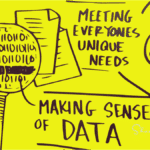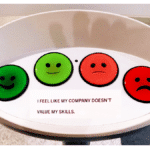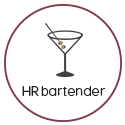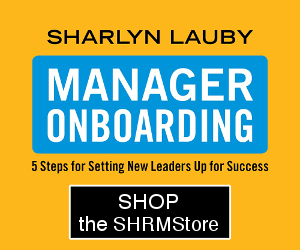Estimated reading time: 5 minutes
(Editor’s Note: Today’s article is brought to you by our friends at Neocase, a provider of cloud solutions for HR transformation. For 20 years, Neocase has been offering solutions to improve the employee experience. They recently announced a new Employee Journey solution that provides a customizable complete onboarding to offboarding experience. Enjoy the article!)
Regardless of the unemployment rate, organizations continue to be focused on hiring and retaining the best talent. That means creating an employee experience where individuals get the information they need at the moment they need it. In fact, in a recently updated article titled “The Employee Experience Platform: A New Category Arrives”, author Josh Bersin talks about using technology as a way to deliver a great experience to employees.
I was reminded of the Bersin article as I was reading Neocase’s “The Ultimate Guide for HR Service Delivery”. When you have a moment, I would recommend checking out the guide. It reinforces the connection that technology can be used to help organizations deliver great employee experiences.
But we also need to realize that organizations are trying to find ways to deliver a great employee experience in an effective and efficient way. And effectively and efficiently aren’t simply business buzzwords. Effectively meaning that the organization is meeting (or exceeding!) goals and efficiently means in the most cost-effective way possible.
That’s why I want to spend some time today to talk about HR Service Delivery (HRSD). HR Service Delivery helps organizations operate more effectively and efficiently. HRSD does that using a suite of tools and processes to support employees and deliver better experiences. A few of the tools included in HR Service Delivery include:
Business Process Automation (BPA) is exactly what it sounds like. Organizations can use technology to automate manual processes. A great example is using BPA for new hire paperwork. Then the organization can use another tool – digital document management – to store those forms!
Employee Self-Service allows employees to do many of the functions related to their employment like reviewing and updating their personal information.
Case Management allows employees to ask questions and get answers. In our personal lives, we expect to have our problems solved and to have it done in speedy fashion. Like an employee requesting an employment verification so they can sign an apartment lease. The case management tool provides prioritization so time sensitive inquires get answers first.
Knowledge Base is like a FAQ for employees. It’s an online environment where employees can get answers to common questions like “How do I request time off?” or “When is benefits open enrollment?” Like the case management tool, employees expect to get answers quickly and hopefully have them at their fingertips, like on their phones or other mobile devices.
HR Service Delivery is focused on delivering that great employee experience in an effective way, which in turn helps the organization become more efficient.
HR Service Delivery: 4 Benefits
Now that we’ve talked about what HR Service Delivery is, let’s discuss the benefits to implementing this model.
First, employees get an experience like what they have in their personal lives. I’m listing employees first intentionally. While HR and the organization benefit from HR Service Delivery, the reason for doing this is employees and improving their experience. Today’s technologies have already trained us for this. Got a new address? Update it online. It’s fast, I can do it on my time and know it will be entered correctly. Got a question? I can look up the answer on a FAQ. And if I can’t find the answer, I can contact HR via a contact form and I know they will get back to me.
The second benefit goes to human resources. HR departments can use HRSD to provide answers to regularly asked questions via a knowledge base environment. This process change allows them to focus on employee questions that are unique and/or need extra attention. The case management system also allows HR to prioritize those individual requests, making better use of their time. In addition, HR can view the types of requests they’re receiving via a dashboard. This could offer additional insights maybe for a new FAQ or how-to guide that makes the employee’s experience better.
The third benefit goes to the manager. When employees need to visit HR, managers often become part of the situation. The employee might initially ask their manager the question and the manager doesn’t know the answer. Or they don’t want to admit that they don’t know the answer. The employee might become distracted because they need to find time to visit HR and have to ask the manager for permission. Or the manager isn’t able to spare the employee to let them visit HR. Regardless, giving employees the ability to find their own answers and work with HR directly is something that managers want. It allows managers to focus on the work and keep the department running.
The last benefit belongs to the company. Remember the goal: great employee experience delivered in an effective and efficient way. When employees are getting answers, everyone wins. Employees are happy because they’re focused on the work (and not the paperwork). Managers are happy because they’re getting stuff done. And, HR is happy because their time is being spent on the right things.
HR Service Delivery = Better Employee Experiences
It really isn’t a surprise that organizations are looking for ways to deliver a great employee experience while being more productive and fiscally responsible. The good news is that technology can help with that. In fact, technology tools have a proven track record of effectiveness and efficiency when it comes to our activities as a consumer. It only makes sense that HR Service Delivery would be able to bring the same benefits to the employee experience.
If you want to learn more about HR Service Delivery and how it can benefit your organization, download Neocase’s “Ultimate Guide for HR Service Delivery”. I found it to be an informative read on strategies for creating a better employee experience and optimizing HR.
31








